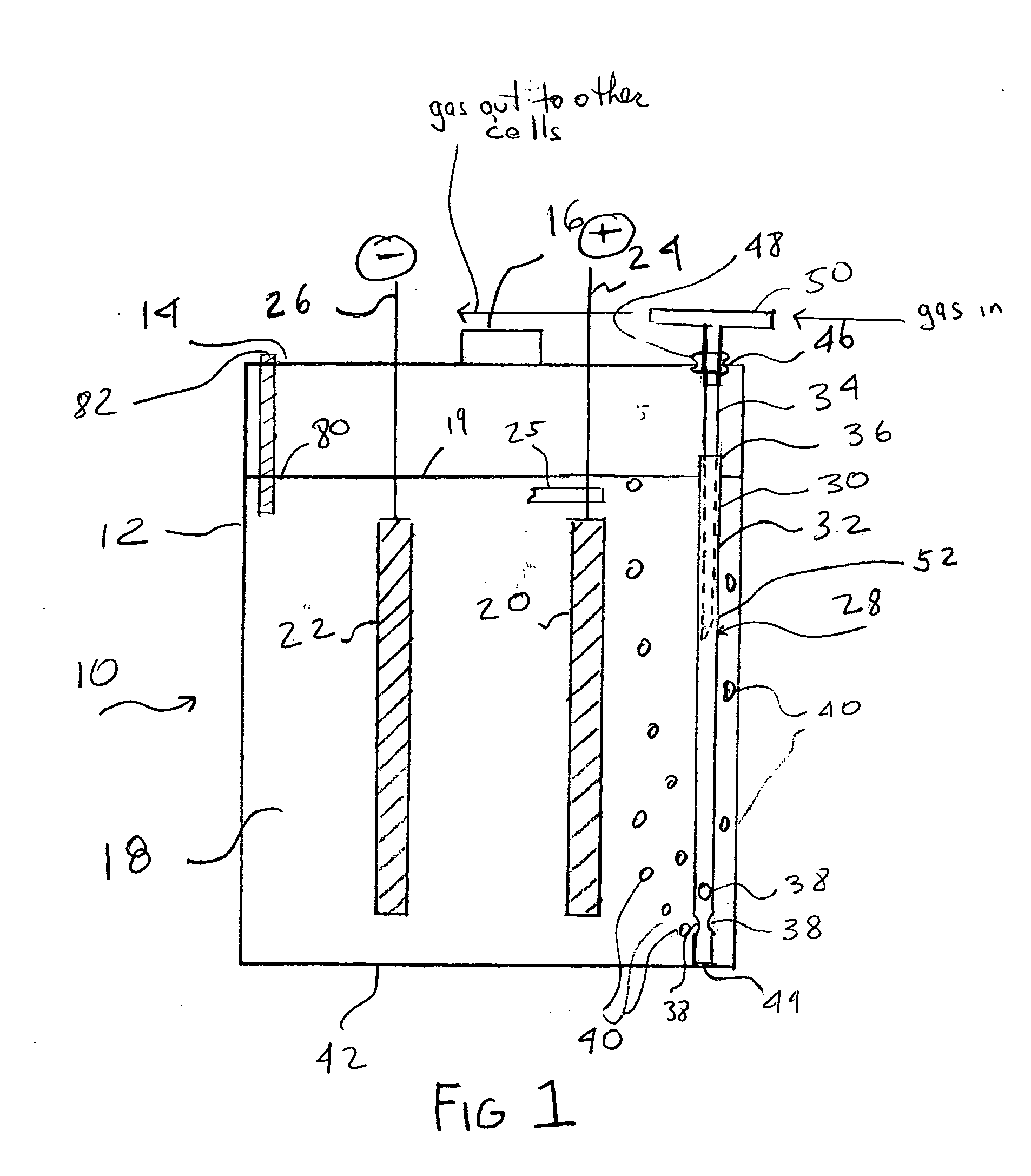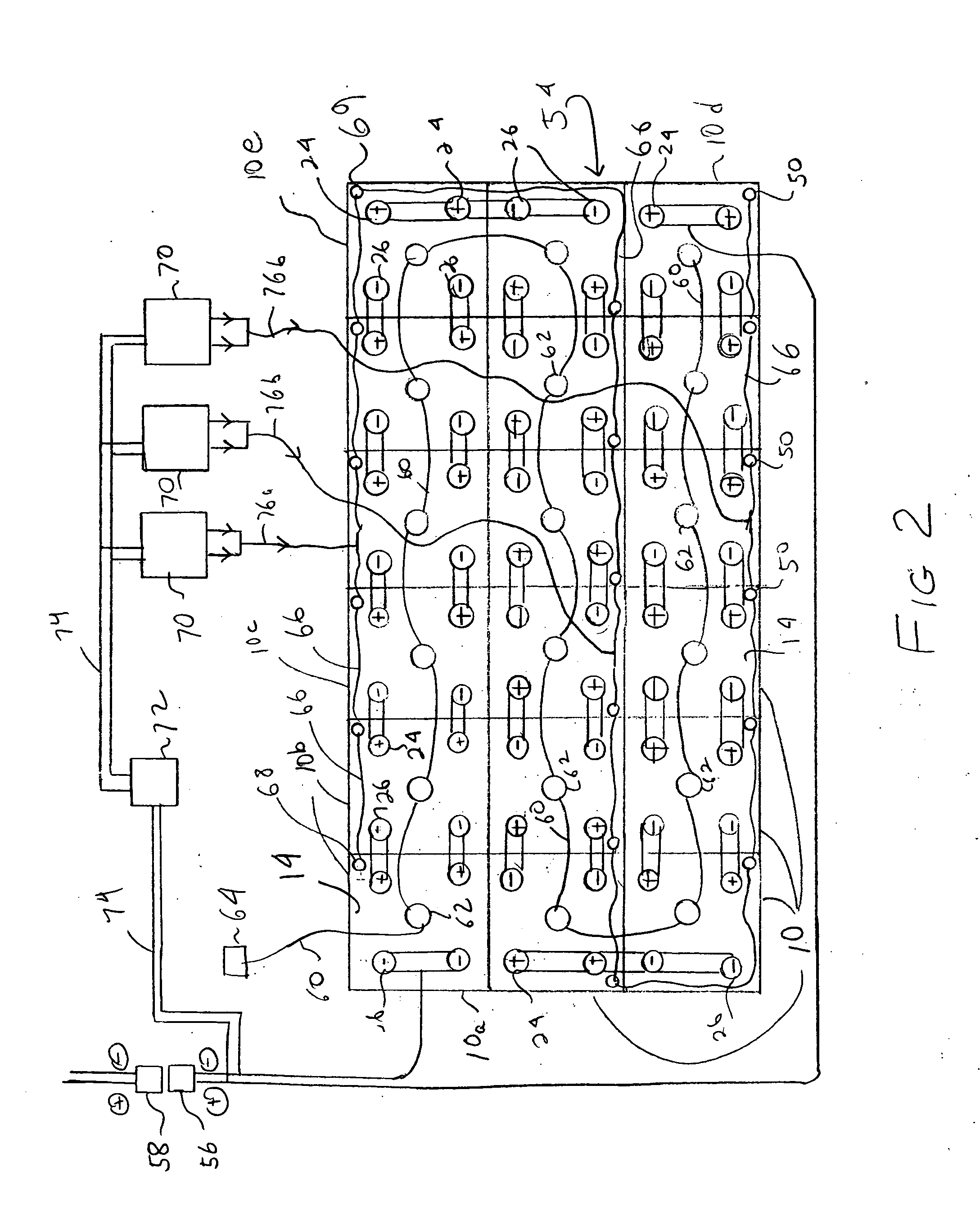Evaporative cooling for aqueous batteries
- Summary
- Abstract
- Description
- Claims
- Application Information
AI Technical Summary
Benefits of technology
Problems solved by technology
Method used
Image
Examples
Embodiment Construction
[0016] The present invention provides a novel means for cooling aqueous batteries. Although the invention will be discussed with reference to industrial batteries, and more particularly to lead acid type industrial batteries, it will be appreciated that the present invention can be applied to other types of batteries that can benefit from cooling.
[0017] With reference to FIG. 1, a battery cell 10 is illustrated. The battery cell 10 is a single cell that typically is combined with multiple such cells 10 to form a battery. For example, lead acid batteries formed of 12, 18 and 24 such cells electrically connected in series are typical. The cell 10 has a housing 12, a housing cover 14 closing the top of the housing 12 and which has a vent 16 through which gasses from within the cell 10 can vent. An aqueous electrolyte 18 is provided in the housing, such as sulfuric acid for lead acid cells and sodium hydroxide for nickel alkaline cells. Immersed in the liquid electrolyte 18 is a positi...
PUM
 Login to View More
Login to View More Abstract
Description
Claims
Application Information
 Login to View More
Login to View More - R&D Engineer
- R&D Manager
- IP Professional
- Industry Leading Data Capabilities
- Powerful AI technology
- Patent DNA Extraction
Browse by: Latest US Patents, China's latest patents, Technical Efficacy Thesaurus, Application Domain, Technology Topic, Popular Technical Reports.
© 2024 PatSnap. All rights reserved.Legal|Privacy policy|Modern Slavery Act Transparency Statement|Sitemap|About US| Contact US: help@patsnap.com










